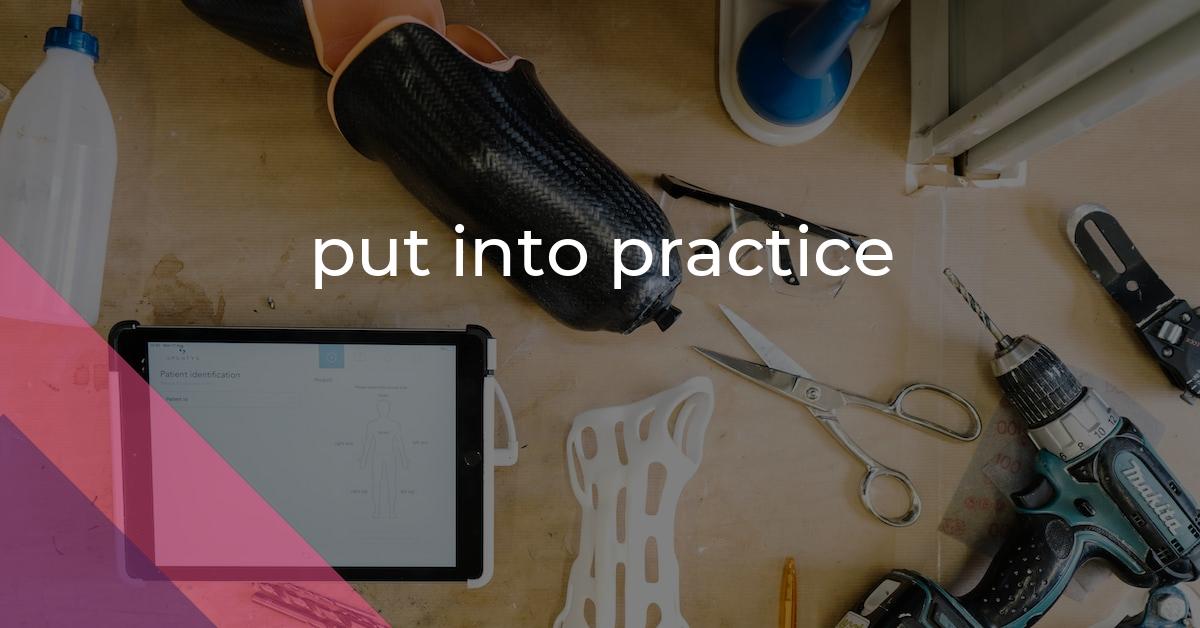put into practice: Idiom Meaning and Origin
What does ‘put into practice’ mean?
The idiom "put into practice" means to apply or utilize something in a practical way, rather than just discussing or theorizing about it.

Idiom Explorer
An idiom meaning in the way that something is done or in a particular style.
The idiom "put to work" means to utilize or employ someone or something for a particular purpose or task.
The idiom *put one's shoulder into* means to make a significant effort or commitment towards achieving something. It conveys the idea of using physical force to accomplish a task or overcoming a challenge with determination and dedication.
The idiom "put one's money where one's mouth is" means to back up one's words or claims with actions or financial support.
The idiom *put one's mind to it* means to concentrate or focus one's thoughts and efforts on a particular task or goal.
The idiom "put one's heart in" means to do something with great enthusiasm, passion, and dedication.
The idiom "put one's head in the sand" means to ignore or avoid reality or a problem, refusing to acknowledge it or take action. It is often used to describe someone who is in denial or unwilling to face the truth.
The idiom "put oneself across" means to successfully communicate or convey one's ideas, thoughts, or opinions to others in a persuasive or effective manner.
The idiom "put one's best foot forward" means to make a good impression or to present oneself in the best possible way, especially in a new or important situation.
The idiom "put one's back into" means to exert a lot of physical effort or work very hard to achieve a task or goal.
FAIL
One of the most commonly used idioms in the English language is "put into practice." This phrase is often used to emphasize the importance of taking action and implementing something that was previously only theoretical. It originated from the fields of science and medicine, where testing theories in real-world scenarios is crucial.
The idiom "put into practice" carries a sense of action and movement, encouraging individuals to go beyond contemplation and actually implement their ideas and plans. It implies a proactive approach, highlighting the significance of taking tangible steps towards achieving goals. In other words, it encourages people to put their ideas to work.
The significance of this idiom goes beyond professional contexts and extends to personal ones as well. Educational settings often emphasize the importance of practical application, emphasizing the need to apply knowledge gained through theoretical learning in real-world scenarios. So, when you learn something new, it's important to put your mind to it and implement it in practical situations.
Additionally, the idiom "put into practice" underscores the importance of experiential learning. It suggests that true understanding and mastery can only be achieved through hands-on application of knowledge and skills. So, it's not enough to simply understand a concept in theory; you have to put it to work to truly grasp its nuances.
This idiom also conveys the idea of putting forth effort, time, and dedication. Putting something into practice requires perseverance and a commitment to consistently work towards its realization. It's about being willing to adapt and refine approaches when necessary in order to achieve success.
Furthermore, the idiom "put into practice" is related to the phrase "with the manner." It implies that the manner in which we implement our ideas is crucial. It's not just about taking action, but about doing so in the most effective and efficient manner possible. It emphasizes the need to consider the best approach and the potential impact of our actions.
Another related idiom is "put one's mind to it." This implies that in order to successfully put something into practice, you need to apply your full focus and mental energy to the task at hand. It's about using your mind to come up with a plan and then executing it with determination and concentration.
The idiom "put forward" is also related to "put into practice." It suggests the idea of presenting or proposing something, which can then be implemented. This implies that before something can be put into practice, it needs to be put forward - shared with others and considered for implementation.
The idiom "put into practice" emphasizes the importance of taking action and implementing ideas in practical situations. It originated from the world of science and medicine, where testing and applying theories are crucial for progress. However, its usage has expanded to various other contexts, highlighting the value of experiential learning and the necessity of perseverance in achieving success. By employing this idiom, individuals are encouraged to move beyond theoretical thinking and actively work towards their goals, recognizing the essential role of practical application in the process.
Example usage
Examples: 1. After studying different techniques in the art class, the students were able to put their newfound knowledge into practice by creating their own unique masterpieces. 2. The CEO emphasized the importance of teamwork and encouraged employees to put that into practice by collaborating on a major project. 3. In order to improve his golf swing, the golfer decided to take lessons and put the instructor's tips into practice during his next game. Analysis:
The idiom "put into practice" is used to describe the act of applying or implementing something that has been learned or understood in a practical or real-life situation. It emphasizes the transition from theoretical knowledge to practical action.
More "Usage" idioms



